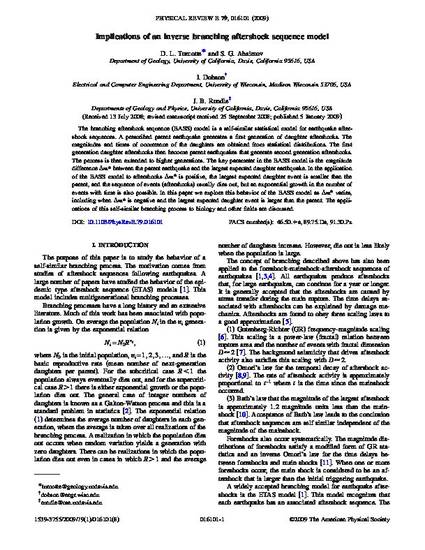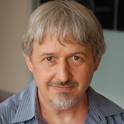
Article
Implications of an inverse branching aftershock sequence model
Physical Review E
(2009)
Abstract
The branching aftershock sequence (BASS) model is a self-similar statistical model for earthquake aftershock sequences. A prescribed parent earthquake generates a first generation of daughter aftershocks. The magnitudes and times of occurrence of the daughters are obtained from statistical distributions. The first generation daughter aftershocks then become parent earthquakes that generate second generation aftershocks. The process is then extended to higher generations. The key parameter in the BASS model is the magnitude difference Δm∗ between the parent earthquake and the largest expected daughter earthquake. In the application of the BASS model to aftershocks Δm∗ is positive, the largest expected daughter event is smaller than the parent, and the sequence of events (aftershocks) usually dies out, but an exponential growth in the number of events with time is also possible. In this paper we explore this behavior of the BASS model as Δm∗ varies, including when Δm∗ is negative and the largest expected daughter event is larger than the parent. The applications of this self-similar branching process to biology and other fields are discussed.
Disciplines
Publication Date
January, 2009
DOI
10.1103/PhysRevE.79.016101
Publisher Statement
Copyright 2009 The American Physical Society. Posted with permission.
Citation Information
D. L. Turcotte, S. G. Abaimov, Ian Dobson and J. B. Rundle. "Implications of an inverse branching aftershock sequence model" Physical Review E Vol. 79 Iss. 1 (2009) p. 016101-1 - 016101-8 Available at: http://works.bepress.com/ian-dobson/5/
